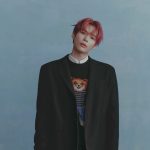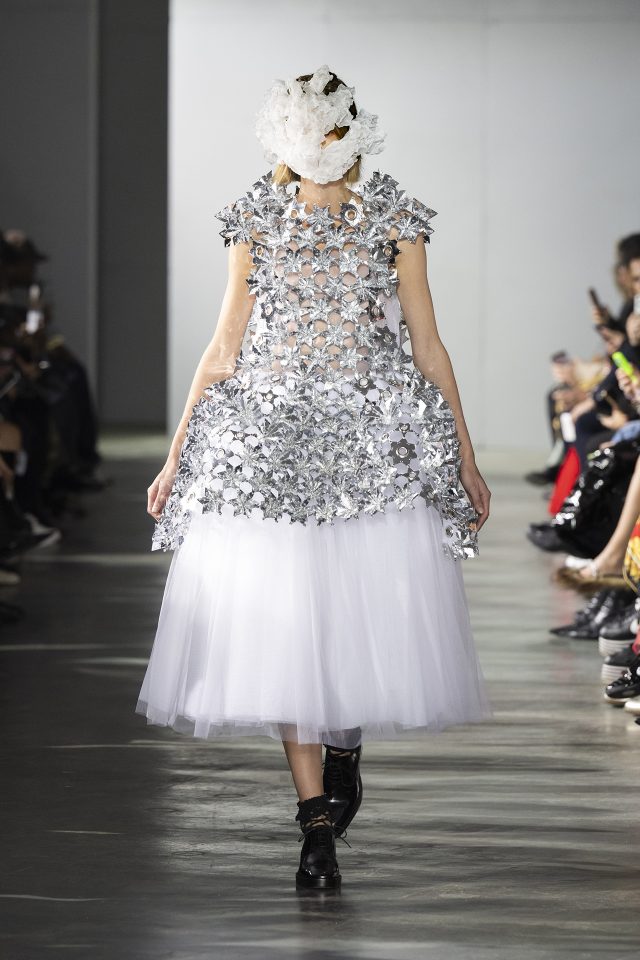ファッションジャーナリスト・W. David Marx (デーヴィッド・マークス) インタビュー
W. David Marx
ファッション・ジャーナリスト W. David Marx (デーヴィッド・マークス) のロングインタビュー。デーヴィッド・マークスが考える東京のファッションの過去と現在について語ってもらった。
ファッションジャーナリスト・W. David Marx (デーヴィッド・マークス) インタビュー
Literature
*You’ll find the English text after the Japanese.

Photo by Hiroki Watanabe | © The Fashion Post
私たち日本人は、自国のファッション文化についてどれだけ深く理解できているであろうか?おそらくW. David Marx(デーヴィッド・マークス)は、日本のファッションについて最も明快に、鋭い視点から語ることができるファッション・ジャーナリストのひとりであろう。『Business of Fashion』のアソシエイト・コントリビューターも務める彼は、過去には『Tokion』『CNNGo』の編集者として携わり、『GQ』『Brutus』『週刊ダイヤモンド』『Harper’s Magazine』『NYLON』『The Japan Times』にもコラムを寄稿している人気ライター。また彼が編集長を務める『Néojaponisme (ネオジャポニズム)』は、独自の視点で日本の現象を海外に伝えており、外国の人が日本を理解するのを助ける重要なメディアとなっている。デーヴィッド・マークスが考える東京のファッションの過去と現在について語ってもらった。
—David さんの簡単なバックグラウンドと、日本に興味を持ったキッカケを教えてください。
アメリカ南部フロリダ州ペンサコーラの出身です。ペンサコーラと岐阜県の下呂市(旧:萩原市)は姉妹都市ということもあり、17歳のときにはじめて日本に3週間のホームステイをしたのが、日本との最初の関わりです。そしてハーバード大学東洋学部に入学し、主に日本の文化や社会について学びました。当時、アメリカで Cornelius (コーネリアス) をよく聴いていたこともあり、日本の音楽にとても関心を持っていました。そして1998年に日本に戻り3ヶ月間のインターンシップを講談社でやることになり、当時はまだあった『Hot-Dog PRESS (ホットドッグ・プレス)』や『Checkmate (チェックメイト)』の編集部で働いていました。そのころちょうど裏原宿系が日本でブームになりだしていて、僕は『猿の惑星』がプリントされているTシャツが、A Bathing Ape® (ア ベイシング エイプ) のモノだと知って、A Bathing Ape® のお店に買いに行ったら、「人数制限のため今日はもう入れません」と言われてしまい、なんだかよく分からずに翌日もう一度買いに行ったのですが、お昼頃に既に100人ぐらいがショップの前に長蛇の列をつくっていました。結局、3時間ぐらい並んで、5,800円ぐらいの T シャツをやっと手に入れました。T シャツなんてアメリカの Gap(ギャップ)で買ったら2,000円で手に入るのに、日本では3時間待った上に5,800円もするなんて。。。そこにカルチャーショックを覚えました。竹下通りにあるブランド古着のショップに行ったときに、昨シーズンの A Bathing Ape® のシャツが約3万円で売られていたりもしましたね。
それからアメリカに戻ったんですけど、A Bathing Ape® に関する情報がまったく出回ってなかったんです。NIGO® の友達でもあるアーティストの Stash (スタッシュ) とか Futura (フーツラ) とかのお店にたまに置いてあるぐらいで、ほとんどどこにも売ってなかったと思います。そして僕は友達と一緒にA Bathing Ape® についての非公式のウェブサイトを作りました。そうしたら『The New York Times (ニューヨーク・タイムズ)』がちょうどこのブランドについての記事を書こうとしていたらしく、記者も情報を手に入れるのにとても苦労しているみたいでした。というのも、アメリカでも一部の人たちにカルト的な人気があったのですが、A Bathing Ape® のことを知っている人たちは一切の情報を教えようとしなかったんです。なので情報を求めていた記者に僕がいろいろと教えてあげたんです。そうしたら、その記事が載った翌日に Stash から連絡がきて、「お前、なんで記者に情報を教えたんだ!おまえになにが分かるんだ!」と、怒りのメールが届きました。ますますおもしろいなと思いました。
そして大学の卒業論文のテーマをA Bathing Ape® にすることに決め、2000年に再び研究のため来日したんです。当時ストリート系カルチャーを取り上げていた『ASAYAN (アサヤン)』や『Hot-Dog PRESS』などのファッション誌などを全部読んで、A BATHING APE® がどうやって有名になったか、マーケティングの手法などを調べたんです。そして140ページぐらいの卒業論文を書きました。その後大学を卒業してからはニューヨークに引越して、カルチャー誌『Tokion (トキオン)』で編集者とお店のショップスタッフとして2年間働きました。
でも、やっぱり裏原宿のカルチャーや日本のマーケティングや消費者行動にすごく興味があったので、2003年に再来日して慶應義塾大学に入学しました。慶應義塾大学ではデータ分析などを主に勉強して、裏原宿カルチャーのデータを集め、日本の音楽カルチャーの研究をしました。卒業後は、某広告代理店の企画部で働きました。それから『CanCam (キャンキャン)』ブームなども到来したりして、そういう現象にとても興味を持ったので、日本のファッションを体系的に分析するウェブサイト『MEKAS. (メカス)』を2007年にはじめました。『MEKAS.』は2009年に終わっているのですが、ほぼ同時期に『Néojaponisme (ネオジャポニズム)』というウェブサイトもはじめまして、そこではいまでも記事を書いています。現在は、日本を拠点にファッションライターとして活動をしていて、さまざまな媒体に記事を書いています。

Photo by Hiroki Watanabe | © The Fashion Post
—日本のファッションの特徴とは?
日本人は、ヨーロッパやアメリカで育った人とファッションに対する視点が全然違うと思います。例えば、一般的なアメリカ人のファッションにとって、ハイファッションやモードなどはすごく遠い存在のモノになっていて、ファッションというのはニューヨークやパリの一部の人がやっているものというか、自分の人生にまったく影響を与えないモノとして見ています。つまり彼らのファッションとはTシャツにジーパン、教会に行くなら紺色のブレザーに Brooks Brothers(ブルックス ブラザーズ)の白シャツみたいな。実用的な意味にしかファッションをとらえていないんです。
一方で、日本人はファッションを「ファッション=モード」という考え方をしていません。例えばパンク音楽が好きな人はパンク系ファッション、ギャルの子はギャル系ファッション、モードの人はモード系ファッションみたいな。みんななんとなく自分のアイデンティティーを洋服で表現しようとしている。逆にアメリカでは、有名なことわざに「Don’t judge a book by its cover(本の表紙で中身を判断するな)」とあるように、洋服でアイデンティティーを表現としようとすると、あまりよく思われない風潮があります。でも日本人は、表紙で判断しなければなにで判断すればいいの?という考えがあって、ファッションで自分のアイデンティティーを表現する人の傾向が高い。だからみんな、モードに興味がなくても、洋服のことをよく考えていて「自分はこういう人間だからこういう洋服を着る」という洋服に対する美学が必要であって、それがとてもおもしろいなと思っています。
—海外ファッションメディアと日本のファッションメディアの違いについてどう思いますか?
まず日本のファッション誌のよい点は、ものすごい情報量があること。あと特集的なアプローチが多く、なんでも深くまで掘り下げている点。昔の『Studio Voice (スタジオ・ボイス)』では、例えばレゲエ特集だったら100ページに渡ってレゲエについてすべてを網羅してますよね。『CanCam』などでも、500ページ以上に渡って女性がすぐに使えるような情報が満載じゃないですか。そして編集者の人もよく勉強していて、正しい情報をきちんと載せています。だから昔なら『relax (リラックス)』、いまなら『Free & Easy (フリー アンド イージー)』とか、日本だとそんなメジャーな雑誌じゃないのに、アメリカに行くと英語で書いてあるわけではないのにアメリカ人に凄く良く購入されているんです。日本の雑誌は他の国がやらないことをやっているので世界中で好まれている傾向にあります。
そもそも日本人と外国人の雑誌の使い方が全然違いますよね。日本人はファッションのマニュアルとして雑誌を使おうとしている。そして雑誌もマニュアル化し、読者に押しつけるという読者と雑誌の関係があります。日本の雑誌は情報が盛んでなんでもあるんですけど、こうやって着こなすと正しいよ!というニュアンスで書いてある。こうやって着ると絶対にバッシングされませんよとか。これをやると間違っていると言われない。まるで保証されているかのように書いてあります。それをまるで聖書かなにかのように読んでいて、みんながなんとなくマネしています。それはクリエイティビティーがないからマネをしているというわけではなくて、日本人はまず正しいやり方を知りたいと思っていて、雑誌を読んで正しい知識を身につけるようとしているだけなんです。
一方で海外にはそういう考え方はあまりありません。例えば『Vogue (ヴォーグ)』が今月号のテーマを「ファンタジー」と設定すると、とてもアート的な写真を使って、ちょっとだけ Hermès(エルメス)のバッグを使って、なんとなくそういう雰囲気のモノが流行っているというような感じだけを出すんです。読者はそれを見て影響を受けて自分で洋服を考えるといった感じです。
『MEKAS.』のときによくやっていたのが、雑誌のページで紹介されたモノとまったく同じようにやっている人がいるか調べるということでした。おもしろかったのが、5、6年前ごろにファッション誌『Boon (ブーン)』で「今年の夏はこの T シャツが流行る」というような特集がありましたが、そこでバンド T シャツとしてオルタナティヴ・ロックバンドの Dinosaur Jr. (ダイナソー・ジュニア) の T シャツが紹介されていました。他にもバンド T シャツはいっぱいあるのに、Dinosaur Jr.のTシャツだけがストリートではたくさん着られていました。たぶん編集者も Dinosaur Jr. の T シャツだけがいいと言っているわけではないと思うんですが。雑誌を聖書のように使おうとしているからこういう現象が起こるんです。これはメディアが悪いということではなくて、使い方が違うからそうなるんですね。
だけど、そのかわりに日本ではトレンドがすごく早く広まります。パリの情報がすぐ雑誌に載って、みんながその雑誌を買って読んで、そして街を見るとみんな同じスタイルになる。だからメディアがないと、日本のファッションの秩序が崩れると思うんです。すごくおもしろいと思います。
そういう現象は昔からあるんです。例えば、60年代のみゆき族(注:1964年ころに東京・銀座のみゆき通り近辺にたむろしていた若者たち)などは、『平凡パンチ』を読んでアイビーのスタイルを見つけてしていました。またアンノン族(注:1970年代中期から1980年代にかけて流行した現象を表す語。ファッション雑誌やガイドブックを片手に一人旅や少人数で旅行する若い女性を指した)が『anan (アンアン)』とか『non-no (ノンノ)』のスタイルをマネしていたり、ニュートラ(注:1970年代中頃から1980年代中頃にかけて日本で流行したファッションスタイル。現在に至るブランドブームの起源とされる)なども『JJ (ジェイ・ジェイ)』がないとニュートラ自体が存在しなかったとか。ボディコンも『Hanako (はなこ)』がないとボディコンはなかったわけだし、ガングロも『egg (エッグ)』がないとガングロがないみたいな。雑誌がないと文化がはじまらないということが多い。そのように考えると、ファッションメディアが重要な役割を担っているとも言えるんです。
– ここ数年でウェブメディアも多くでてきましたが、それについてはどうみていますか?
ファッションブログが増えたおかげで西洋のファッションがより日本っぽくなったと思います。理由はオンラインメディアが一般の人々とファッション業界のよりすぐれた架け橋として機能しているからです。『Vogue (ヴォーグ)』のような雑誌はいつもファッションは最も重要みたいなニュアンスを持っていて、上流階級やパリジャン、セレブリティ向けに書かれています。
でも『The Sartorialist (ザ・サルトリアリスト)』を例にとってみると、あのブログはアメリカにおける一般的なファッションの印象を大きく変えたと思うんです。日本では1990年代からストリートスナップは人気でしたが、アメリカのファッション・カルチャー、特に雑誌ではあまり重要視されていなかった。『The Sartorialist』に登場する写真のほとんどはファッション業界の人々を撮ったものですが、そのサイトを見ると一般の読者も日々の生活のなかで少しドレスアップできるかもと思うようになるんです。そのサイト内のスタイルを完全に模倣しなくても、インスピレーションを受けて毎日の着こなしを少し工夫してみようってなる。日本ではだいぶ昔から当たり前となっていることですが、アメリカでは結構革命的だったんです。
ブログのパワーはすごい。そのために結構速いスピードで完全にハイファッションのシステムに組み込まれている。『The Sartorialist』を見れば分かりますが、最近はハイファッションの世界の住人を撮る機会がどんどん増えていて、“一般”の人々を撮ることはあまりなくなってきています。それでもいままで通り見やすいサイトですが。
別の視点からウェブメディアを見ると、『Hypebeast (ハイプビースト)』や『Selectism (セレクティズム)』のように10年前は存在しなかったサイトがたくさん出てきています。2000年にA Bathing Ape® のコレクションを見たいと思っても、日本に実際に行く以外に見る方法はなかった。でもいまはウェブ上で世界中のブランドの最新情報が毎日更新されています。
以前は情報も価値のある商品で、特別なコネクションを持っている人たちが世界中を飛び回って情報を先に入手して有効活用していましたが、インターネットがファッション・カルチャーにおけるこの仕組みを見事に壊してしまいました。どこにいようがだれでも最新情報を入手できるんです。
—それはファッションが民主化したということでしょうか?
そうだと思います。より“日本”っぽくなったとも言えますね。ある特定の層にいる人たちだけではなくて、だれもがファッションを楽しめる。
とは言え、西洋社会には昔からいつも民主主義とハイセンスの間に対立があるんです。みんな規則正しく美学的にうつくしい世界がほしい一方で、みんな好き放題に暮らせる民主主義の社会を求めている。『Star Wars (スターウォーズ)』の映画の中でもこの対立を見ることができます。帝国側と反乱軍側のスタイルを比べてみると、帝国側は美的により整っていますよね。反乱軍のほうが“いいやつら”ですけど。
アメリカのポストモダンの価値観の上に成り立つ完全に実力主義の世界に近い、今日のシリコンバレーでもそうです。Facebook の CEO、Mark Zuckerberg (マーク・ザッカーバーグ) は尋常ではないぐらいのお金持ちですが、普通のパーカーや T シャツを着ています。そこでのカルチャーは、ファッションに興味がないというより、むしろアンチ・ファッションなんです。みんなサンダルを履くんですが、それは官僚主義だったり、時間の無駄みたいな慣習を打ち破る才能というものを、サンダルが最も純粋に表現していると彼らが思っているから。規則正しく靴のひもを結ぶ必要なんてないと彼らは思っています。
でも彼らのいる環境でなぜファッション性や礼儀正しさがあまり求められないのも分かります。彼らの会社の業績に不可欠じゃないですから。従業員のファッションに一定レベルの基準を求めても、不利益になるかも知れない。だから洋服の着こなしにルールがなければほとんどの人は最も着心地のいい服を選びます。美的感覚など無視して。だから広い意味で、ファッションがスタイルを維持するためにはある一定レベルの独裁主義的なものが必要なのかも知れません。
いまとても人気のあるアメリカのテレビシリーズ『Mad Men (マッドメン)』の世界は、シリコンバレーのスタイルとは正反対。1960年代のニューヨークが舞台なんですが、みんなスーツを着ないといけないんです。これは美意識の観点から見るとうつくしい。みんなそろって一定のドレスコードを守っています。男性はスーツとハット、女性も着飾っている。でもこれは彼らには洋服を自由に着こなす自由がなかった事実を示していますね。男性が少し個性を出そうとしてもチョイスがあまりない。タブカラーかボタンダウンカラーかぐらい。それか柄もののチョッキやちょうネクタイを着るぐらい。
現在のアメリカでは、ドレスコードの完全なる自由化によって、もっとも着心地のいい洋服を着るかわりにドレスアップしてもいいと多くの男性が気づきはじめています。自由に服装を選べるとクリエイティブになりますよね。でもまだアメリカでは個人のレベルって感じで、社会レベルではまだそこまでの域には達していません。
日本では両方のレベルで進んでいて、とてもクリエイティブな着こなしをする人がたくさんいる一方、きちんとした洋服を着ないといけないという社会的なプレッシャーもかなりある。だから日本はとてもファッショナブルな国なんです。
—日本のネットカルチャーについてはどう思われますか?
日本のネットカルチャーの核心部分はいまでも「2ちゃんねる」だと思います。ハードコアなオタク向けの匿名サイトです。そこで表現されている主要な意見には反対なんですが、毎日まとめサイトなどを使って読んでいます。ネット上で起こっていることを把握したいなら必要なことです。『2ちゃんねる』ではよく中国や韓国の批判や、AKB48 やその他の小さな女の子たちに対して夢中になったりしたりしているんですが、問題は、そういう意見が日本の主流では必ずしもないということ。アメリカにある『4chan』と似ていますが、アメリカには『4chan』以外にもネット上で影響力のあるサイトが少なくともいくつかはある。でも日本だと『2ちゃんねる』が圧倒的なんです。
このことについて以前書いたことがあります。AKB48 がなぜ日本でこんなにも大きな影響力を持っているのか?それは秋葉原や『2ちゃんねる』を中心とした活気あるオタクのシーンに密接に関わっているからです。彼らのようなオタクは“一般の消費者”よりもたくさん AKB48 などの CD を買うので、消費力が相対的に大きい。AKB48が 社会で目立つのは、いまは他になにも特にすごく売れているモノがないから。そして一度オリコンチャートで1位を獲得してしまえば、自分たちがメインストリームだと主張できますよね。ファンの層もより広くなります。
昔は、ミュージシャンたちはオリコンチャートのトップにのぼりつめるために幅広いグループの人たちに気に入ってもらえる音楽を作らないといけなかったんですが、いまは“売れる”ということはギャルやオタク、ジャニーズといったサブカルチャーのひとつの層に受けることを意味しています。各層がみんな同じモノを買うんです。なので大衆文化がかならずしも大衆の価値観をあらわしているわけではない。特定のハードコア層の価値観だったりするわけです。奇妙なことに、ニッチな層が大衆のカルチャーを先導しているんです。
例えば、すごくメインストリームで“普通の女の子”が読むファッション雑誌『non・no』はひと月に約100万部売れている時期がありました。同時期にギャル雑誌である『Popteen (ポップティーン)』はだいたい30万部ぐらいでした。でもいまは普通の女の子が雑誌を買わなくなってしまったために『non・no』はひと月に10万部ぐらいしか売れない。でもギャルたちはいまだに『Popteen』を買い続けているから30万部売れ、コンテンツはニッチにもかかわらず、大衆に売れている雑誌になる。もし売り上げが以前より落ちても、他の雑誌よりは比較的よく売れていることになります。
こういう現象によって大衆向けカルチャーがニッチに傾いたりしていて、『CUTiE (キューティ)』という雑誌は、前は原宿のストリートファッション系雑誌だったんですが、いまはギャル系になっていますよね。『non・no』でさえもギャルっぽいスタイルになってきています。ギャル系かオタク系かの選択をしないと、もう読者がいない時代なんです。
—ギャルについてですが、最近はギャルの歴史の研究をしているそうですね。
はい。1990年代から今日までのギャルカルチャーの発展にすごく興味があるんです。
1990年代中頃の初代コギャルたちは制服を着て、少し茶髪にして、少し日焼けしていて、軽いサーファーのようなメイクをしていました。でも1998年から1999年ぐらいにかけて、ギャルのスタイルは“ガングロ”になった。フェイクかつすごく真っ黒な肌になって、真っ黒の顔に白いメイクなんかをしていました。どういう女の子がギャルなのかということに関して大きな変化があったと思うんです。1980年代にヤンキーになったような層が、1990年代後半にはギャルになった。反社会的な主張のスタイルです。そしてここ10年間、ギャルは同じステータスを保ちつつも、スタイルはかなり控えめになってきている。少し王女様チックにさえなったりもしています。
あと今日のギャルについてですが、もうひとつおもしろいことがあります。昔はギャルのスタイルといえば決まっていて、Alba Rosa (アルバローザ) の T シャツを着たりして“夏”っぽくないといけませんでした。でもいま Shibuya 109 に行くと、本当にいろいろなスタイルがあるんです。でもすべて“ギャルブランド”。ハイファッションのランウェイやメンズウエアからアイデアを拝借した洋服がたくさんあるんですが、それでも全部“ギャル”なんです。
数年前に創刊されて、いまはもう休刊になってしまった『PopSister (ポップシスター)』という雑誌があったのですが、これはすごくおもしろかった。コンセプトは渋原系で、渋谷と原宿のスタイルの融合です。なので金髪の巻き毛に大きなフェイクまつげと厚化粧をしたギャルたちが、プレッピーな洋服を着たり、Nike (ナイキ) をはいたりしていたんです。髪の毛とメイクさえ“ギャル”だったら、服装はなんでもいいっていうメッセージですね。洋服の観点から言えば、いまではギャルのスタイルはすべての分野にまで及んでいます。態度や生き方を通してギャル感を出せるんです。実に自由でオープンなファッションについての考え方ですよね。
メンズファッションの分野はあまりある特定のトレンドを重視しないようになってきていると思います。「このスーツは5年後にダサくなる」とか以前は言えたんですが、そういうトレンドのサイクルがもう不明瞭。狭いラペルからワイドなラペルまで、スーツのスタイルってほとんどすべて出尽くしてしまってますからね。厳密に言えば、全部レトロ。そしてかんたんに入手できます。ファッションは、実際の洋服のディテールというよりは、もうどういう層のグループのスタイルなのかということなんです。着られない洋服っていうのはオシャレじゃない人たちが着ているモノだけ。5年前の洋服がカッコよくないと思われる理由は、オシャレじゃない人たちがいまだにそれを着ているか、または着はじめたから。
いまの時代、服装の自由度はかなりあります。ギャルがそのことをとてもうまく表現している。ある特定のスタイルではないといけないということはない。どのように着こなすかのほうが重要なんです。
<プロフィール>
W. David Marx (デーヴィッド・マークス)
東京をベースに活動するファッションジャーナリスト。『Néojaponisme』編集長。ハーバード大学と慶應義塾大学卒。以前は『CNNGo』『Tokion』『the Harvard Lampoon』などで編集にたずさわり、『GQ』『Brutus』『Weekly Diamond』『Nylon』『The Japan Times』などの媒体にも寄稿し、記事の翻訳も担当している。

Photo by Hiroki Watanabe | © The Fashion Post
We sometimes have to question ourselves about how deeply we understand Japanese fashion culture. Arguably, W. David Marx is one of the most reliable journalists capable of talking about Japanese fashion, always doing so in the clearest manner and from a highly perceptive viewpoint. He is an Associate Contributor at Business of Fashion and has also previously edited Tokion and CNNGo. He has also written for GQ, BRUTUS, Diamond Weekly, Harper’s Magazine, NYLON and The Japan Times, among many others. Furthermore, he currently works at Néojaponisme as Editor in Chief. Néojaponisme conveys the happenings in Japan to the rest of the world from a distinctive point of view. It is regarded as an important medium helping foreign audiences to understand Japan. We met up with David Marx and asked him to talk about past and present Tokyo fashion.
—Please tell us a bit about yourself, and what got you into Japan?
I’m originally from Pensacola, Florida, which is in Northwest Florida and very culturally Southern. Pensacola happens to have a sister city connection to a town in Gifu Prefecture called Hagiwara (now part of Gero), and through that, I did a three-week home stay at age 17. After that I studied East Asian Studies at Harvard, mostly focusing on Japanese culture and society. I had always been into alternative and indie music as a kid, but after going to Japan, I took on this intense fascination with J-Pop. But when I moved to Boston, I found it hard to get my hands on J-Pop CDs, so I turned my attention to Japanese indie acts like Cornelius and Shibuya-kei stuff which was ironically more widely available at the time thanks to re-releases on U.S. labels. I came back to Japan in 1998 to intern for the publisher Kodansha for three months, and I ended up in the editorial offices of Hot Dog Press and Checkmate — two men’s fashion/lifestyle magazines that no longer exist. This was right when the whole Ura-Harajuku street fashion boom was at its peak, and when I was flipping through an issue of Hot Dog Press one day, I saw a T-shirt with the face from Planet of the Apes. Since I liked Cornelius and noticed he wore this kind of thing, I decided I wanted this shirt, which happened to be from A Bathing Ape.
I went to the Bape store one afternoon, and I knew it was supposed to close at 7pm, but I got there at 5pm, and they wouldn’t let me in. I had no idea why they would turn customers away, so I was intrigued and went back the next day around noon. At that point, there were already about 100 people waiting in front of the store. It took me an hour to get inside and then another two hours to buy something and get out. I ended up buying a T-shirt for ¥5,800. From my perspective as a 19 year-old kid from the U.S., where Gap T-shirts maybe cost $20, I was shocked that people were willingly waiting three hours to spend triple that amount on a single T-shirt. I also went up the street to these re-sellers on Takeshita-dori and saw Bape shirts from the year before for about ¥30,000.
I went back to school that Fall obsessed with Japanese street fashion and realized there was basically no information about A Bathing Ape in English. And the actually clothing was pretty much unattainable. Nigo’s friends Stash and Futura stocked Bape at RECON, but otherwise it seemed like this huge phenomenon in Japan that no one really knew about. The brand of course also had no website. So a friend and I started an “unofficial” website for Bape with basically all the info we could find, some of which was not particularly accurate. I kind of used the website to try and get my head around the whole thing.
But at the time, in 1999, a New York Times writer was trying to do a story on ultra-rare street wear and wanted to write up Bape. But they couldn’t get any info on it, nor would Recon even let them buy a shirt, so they called me up for an interview. The day the article came out, Stash wrote this blistering email to me and the other guy who ran the site about how dare I talk to the press about Bape since we weren’t involved. It’s a fair point when I think about it now. But it made me realize more and more that I had stumbled into a very interesting phenomenon.
The next year I was telling a grad student about the entire Bape episode, and he was like, that’s your thesis right there. So I ended up going back to Japan in 2000 to research A Bathing Ape for my senior thesis. I spent a summer reading every issue of Hot Dog Press and Asayan from the 1990s and trying to figure out how A Bathing Ape became popular with what seemed like a counter-intuitive and not particularly customer friendly marketing strategy of no ads, hidden stores, limiting product, making consumers wait in line, etc. It ended up being about 140 pages, but I had more questions at the end of it than I answered.
After graduating I moved to New York and worked for a few years as an editor/writer as well as shop store clerk for Tokion magazine. Since that time I have continued to write freelance articles about Japanese fashion and culture for a lot of magazines, like Brutus, GQ, and Nylon, etc.
In 2003, I moved back to Japan to do a Masters in Marketing and Consumer Behavior at Keio University. I wanted to do more research on Japanese fashion, but the program was very numbers-oriented so I switched the topic to music. After graduating I worked as a market planner for a small ad firm. At that point, I started looking more and more at CanCam and girls fashion culture. This was the peak of the Ebi-chan boom and the gyaru market was also booming. We then decided at that company to start a website/consulting service called MEKAS. that focused on explaining the Japanese fashion market to those outside of Japan. MEKAS. ended in 2009, but I have continued to write about Japanese fashion and culture for my own web journal Néojaponisme, which I co-founded with designer Ian Lynam in 2007.
—What do you think of Japanese fashion in general?
When I was a 19 year-old unworldly American kid, the word “fashion” seemed to just mean “high fashion” — something incredibly distant from everyone’s ordinary life, something that was intended for a very small group of people in Europe or New York. I had no interest in fashion because there was no relation between the clothing I knew and “fashion.” Everyone around me wore T-shirts, jeans, khakis, maybe a button-up shirt. When you went to church or a school dance or something, you wore a navy blazer and Brooks Brothers tie. But no one understood those clothes as “fashion” nor would use that word.
What instantly excited me about Japan is that the entire concept of “fashion” had been liberated from just meaning “high fashion.” Everyone cares about how they dress and how it represents them to the rest of society. Punks wear punk fashion. Gyaru wear gyaru fashion. And certainly there are more people in Japan than maybe anywhere else in the world who deeply care about high-end fashion brands. So you get this incredibly dense, complex, and inspiring fashion ecosystem.
In the U.S., there is the basic idea about “don’t judge a book by its cover” — as if external appearances should be ignored when trying to really understand someone’s identity. The Japanese attitude towards this would be, if you don’t judge a book by the cover, what exactly would you judge it on? In Japan, the outside is the way you accurately express the inside. Clothing is the most effective and meaningful way you express identity and group affiliation.
—What is the difference between Japanese fashion media and foreign fashion media?
The best part about Japanese fashion media is the sheer amount of information. Magazines, in particular, usually have a single tokushu theme for each issue, so they can go really deep into a topic. A magazine like Studio Voice (now extinct) would do an issue on dancehall reggae, and it would have basically 100 pages just on dancehall reggae. The end result is completely exhaustive. But even a mass market women’s fashion magazine like CanCam will be 500-600 pages each month of completely usable fashion information on what to wear and how to wear it.
For the last decade or more, I have seen people outside of Japan who don’t even read Japanese buying up Japanese magazines like relax or Free & Easy just because the magazines become glossy encyclopedias on certain topics. No other country has magazines that are this authoritative.
That being said, the way Japanese readers use the magazines is completely different from the rest of the world. Japanese fashion magazines are basically manuals, and the information is structured in a way where editors are advising and telling readers the proper way to do things. The implicit bargain is, if you follow this information, you won’t get it “wrong.” Japanese fashion magazines function as an authoritative guarantor. The information contained inside the magazines becomes almost sacred, and people follow that scripture down to the word. This following of fashion trends in Japan is often seen as a lack of creativity or individuality, but most people reading the magazines go into the entire thing with the desire to know the “proper” way to dress. That is why they are reading magazines in the first place, so it follows that they will enact the advice as written.
Outside of Japan, readers generally have a different approach to fashion magazines. When you look at Vogue in the U.S. or Europe, the idea is to suggest trends very abstractly in artistic and fantastical photo shoots. The clothes in most editorial spreads are not particularly practical, nor are the editors actually suggesting you run out and wear that exact outfit. But this, I guess, is what readers want. They want to take inspiration from the pages but not direct orders.
There are a lot of readers in Japan, meanwhile, who do want those direct orders. When we were doing MEKAS., I did an article that would basically take street photos and match them exactly to Japanese magazine editorial. Readers would take the styling and copy it directly. I had seen this before with the street fashion magazine BOON (now out-of-print) doing an issue back around 2005 where they said, this summer “rock band T-shirts” are in style. They showed lots of examples, including one from the band Dinosaur Jr. The point of the article was that, all rock band T-shirts are “in style” and you should wear ones from your favorite Western rock band. But after the issue came out, I would walk around and see an enormous amount of guys in the exact same Dinosaur Jr. T-shirt as the one in the magazine.
So you get this incredible degree of trend adoption, down to the detail, but the primary mechanism for getting that result is readers treating the editorial information as gospel and following the advice exactly.
Fashion trends spread very quickly in Japan because of this structure. Magazines pick up the global trends and then coordinate with local brands, who are also looking overseas, to feature the latest products that fit into these trends. Readers pick up these magazines, treat them as catalogs, buy the clothes, and style them exactly how they are featured in the magazines. So you get lots of people wearing the exact same outfits — all on global trends. Not everyone, but enough to make it very conspicuous. And it’s usually a faster adoption rate than overseas. The fashion market in Japan is very ordered, and the media play the most important role as the link between the brands/retailers on one side and normal consumers on the other.
Media have been the source of most youth fashion throughout the entire post-war. The Miyuki-zoku preppies in 1964 found their style from reading the magazine Heibon Punch, while there was an entire female subculture in the mid-1970s called the Annon-zoku of girls who lived out the advocated lifestyles in magazines an•an and non•no. The nyutora “new traditional” look came in thanks to magazine JJ, and bodicon body conscious clothing came with Hanako magazine. Ganguro style in the gyaru community started with egg.
The point is that most fashion cultures come directly from a specific fashion media. They have the power to create a style, and equally importantly, have the authority to tell huge groups of youth to adopt those clothing styles in that exact way.
—There are a growing number of online fashion media. What do you think of this?
I think the rise of fashion blogs has actually made Western fashion more like Japan, because online media acts as a better bridge between everyday people and the fashion industry. Magazines like VOGUE have always maintained a nuance that fashion is first and foremost meant for high society, Parisians, and celebrities.
But take The Sartorialist. I think that blog alone has greatly changed the general impression of what “fashion” is in the United States. Street snaps have been popular in Japan since the 1990s but they were not a regular part of U.S. fashion culture, especially in magazines. Even though the Sartorialist is mostly pictures of fashion industry professionals, the way it was presented made normal readers think that they could too start dressing up a bit more in their everyday lives. Even if you weren’t going copy the exact look of the people, you could get inspired to put more effort into your daily style. This again, has been a really basic idea in Japan for a long time, but it was relatively revolutionary in the U.S.
I think the power of blogs is the reason why blogging has been completely integrated into the high fashion system at quite an incredible speed. In the case of the Sartorialist, he’s being sucked more and more into the high fashion world and seems to shoot less “normal” people these days. But the site is still as accessible as always.
On the other side of things, there are lots of websites like Hypebeast or Selectism, which did not exist a decade ago. When I wanted to see collections of A Bathing Ape in 2000, there was really no way to do it other than to literally go to Japan. Now on the web, you can see all the latest products from brands around the world on a daily basis.
The big change though is that products — and a lot of time, the information itself used to be valuable commodity — so you had lots of jet-setting people with special access, who could arbitrage their advantage in getting information quickly. The Internet completely destroyed this part of fashion culture — everyone everywhere knows what is available now.
—Do you mean that fashion has become more democratized?
I think you can say that. It’s gotten more “Japanese”— where everyone can enjoy fashion, not just a certain circle of people.
That being said, there has always been a conflict between democracy and good taste in the West. On one hand, everyone wants an ordered and aesthetically pleasing world, but on the other hand, everyone wants a democratic society where everyone can do as they please. You can even see this in Star Wars. Compare the styles of the Empire in Star Wars and the rebels. The Empire looks much cleaner aesthetically, but the rebels are the “good guys.”
This is very obvious today if you look at Silicon Valley — which is pretty close to a complete meritocracy built on post-modern American values. Mark Zuckerberg is extremely rich, but he just wears ordinary hoodies and T-shirts. The entire culture is not just disinterested in fashion but basically anti-fashion. Everyone wears flip flops because they think this is the purest expression of talent trumping bureaucratic or time wasting social protocol. You don’t need to lace up shoes to code.
But you can see why expectations of fashion and decorum decrease in these environments because they are just not essential to those companies doing well. You can make the case that forcing employees to “fashion standards” could be detrimental to their well being. So when there are no rules about how to dress, most people choose to wear the most comfortable thing and completely ignore aesthetics. This almost suggests that fashion needs a certain amount of authoritarianism to maintain style — at least on a broad scale.
This is also visible in the American TV series Mad Men, which is very popular right now, maybe for being the very anti-thesis of the Silicon Valley look. You have New York in the 1960s, where everyone has to wear a suit. It’s clearly a mandated uniform but the overall effect is beautiful from an aesthetic standpoint. Everyone is put together and following standards on how they dress. Men are in suits and hats, women are in dresses. Yet this stems directly from the fact that they had so little freedom of what to wear, and when men did try to express themselves, it’s in a very narrow band of pre-determined style choices like, a tab collar vs. a button-down collar or adding a patterned waist coat or bow tie.
What we are seeing now though is that a lot of men in the U.S. are realizing that the absolute freedom of dress means they can also dress up instead of wear the most comfortable thing. Freedom in dress can lead to creativity, but the difference is that it’s on an individual scale — not a broader social one.
In the case of Japan, you have both happening — a lot of very creative individuals but also a broad social pressure to wear nice clothes. That makes the country very fashionable.
—What’s your opinion about Japanese Internet culture?
I feel like the heart of Japanese web culture is still the BBS 2channel (2ch), which is an anonymous site only really for hardcore nerds. Although I basically disagree with the dominant opinions expressed on 2ch, I tend to read it daily through the main aggregator blogs. You have to if you want to keep up with “what is happening on the Internet.” The problem is that the kind of “taste culture” that 2ch represents — bashing China and South Korea, lolicon obsession over AKB48 and little girls — is not particularly a good reflection of mainstream Japanese tastes. It’s probably similar to 4chan in the U.S., but at least there are other sources of web culture in the U.S. outside of 4chan. Whereas in Japan, 2ch still stands alone in terms of influence.
I’ve written about this before, but the reason AKB48 is so big now in Japan is that it taps into the very energetic otaku scenes centered around Akihabara and 2ch. Since these groups purchase much more than “normal consumers,” their buying power is proportionally larger. So AKB48 stands out in society because nothing else is selling very well at the moment. And once they were able to hit the top of the Oricon charts, they had a claim to be “mainstream” culture and attract a wider base of fans.
In the past, musicians had to create music that would appeal to a large group of people in order to top the charts. Now what is “selling well” just means that a single subcultural group — gyaru, otaku, Johnny’s fans — all purchase the same thing. So mass culture does not really represent “mass values” but certain pockets of hardcore fans. Niches oddly have the most influence on culture.
For example, the very mainstream, “normal girl” fashion magazine non•no used to sell about 1 million copies a month. At the same time, gyaru magazine Popteen sold about 300,000. So at that time, Popteen was a “niche” and non•no was “mainstream.” But now ordinary girls stopped buying magazines, so non•no sells something like 100,000 copies a month — but the gyaru are still buying Popteen, which sells 300,000 copies. So now Popteen is the “mass” title despite the fact that it has the more niche fashion. Even if Popteen doesn’t sell more copies than it used to, it is selling better relatively compared to other magazines.
This has totally distorted mass culture towards fringe niches. CUTiE magazine used to be an Harajuku-flavored street fashion magazine, but it’s basically a gyaru-like magazine now. Even non•no changed its own style to be more gyaru-influenced. If you don’t make culture either more gyaru or more otaku, it won’t find an audience.
—Speaking of gyaru, I hear you are currently working on a history of Japanese gyaru.
Yes. I am very interested in the evolution of gyaru culture from the 1990s to today.
The very first Japanese kogyaru in the mid-1990s wore their school uniforms, had slightly brown hair, slight tans, and very light surfer-y make-up. Yet then around 1998 or 1999, the style went “ganguro” — extremely fake tans, heavy white makeup on black faces. I think there was a radical shift here of the kind of people who became gyaru, and that explains the difference. Basically people who would have become working class yankii delinquents in the 1980s instead became gyaru in the late 1990s and that changed the style to an anti-social statement. Then in the last decade, gyaru have retained the same class profile but the style is much less intentionally confrontational. Now it’s about radical transformation into looking a bit like a princess.
What is also interesting about gyaru today is that the style itself used to be very strict — it had to be “summer-y,” like Alba Rosa T-shirts. But now if you go to Shibuya 109, there’s a huge diversity of styles, yet they are all “gyaru brands.” A lot of the clothes take direct influence from runway fashion or menswear yet they are all still “gyaru.”
I was very interested in PopSister magazine, which launched a few years ago but recently stopped publishing. The concept was “Shibu-Hara-kei” — trying to create a fusion of styles between Shibuya and Harajuku. So you would have all these gyaru in their blond curly hair and huge fake lashes and heavy makeup wearing preppy clothing or Nike kicks. The main message was, it doesn’t matter what you wear anymore if your hair and makeup are “gyaru.” Gyaru style now encompasses everything in terms of clothing — you add the “gyaru”-ness through your attitude, way of life. This is actually a very free and open way of thinking about fashion.
At the same time, I think men’s fashion has also become much less oriented towards specific contemporary trends. You used to be able to say, this suit will be uncool in five years, but I think the cycle is not so distinct anymore. We have a rich history of almost all suit styles, from narrow lapels to huge wide lapels, and they’re all technically retro and up for grabs. Fashion is much more about style associations with certain groups than with actual apparel details. The only thing you can’t wear is the thing that unfashionable people are currently wearing but that’s about it. The reason something from five years ago may not be cool is simply that unfashionable people are either still wearing it or just started wearing it.
This leads to a lot of freedom in dress, that I think the gyaru express really well. Certain styles matter less — it’s mostly about how you wear them.
<Profile>
W. David Marx is
W. David Marx is a fashion journalist based in Tokyo, Japan. He is Editor in Chief at Néojaponisme and is a former editor of CNNGo, Tokion and the Harvard Lampoon and has provided writing and translation for such publications as GQ, Brutus, Weekly Diamond, Harper’s, Nylon, and The Japan Times. He is a graduate of Harvard University and Keio University.











